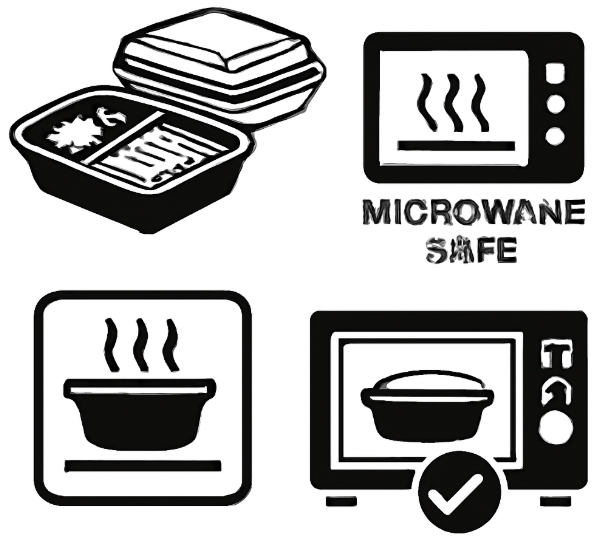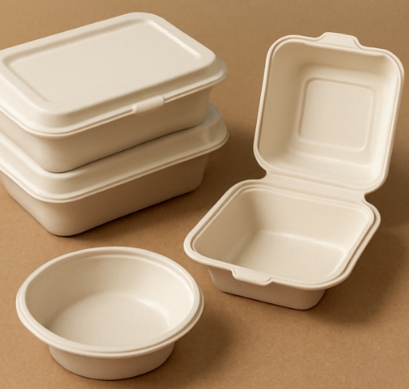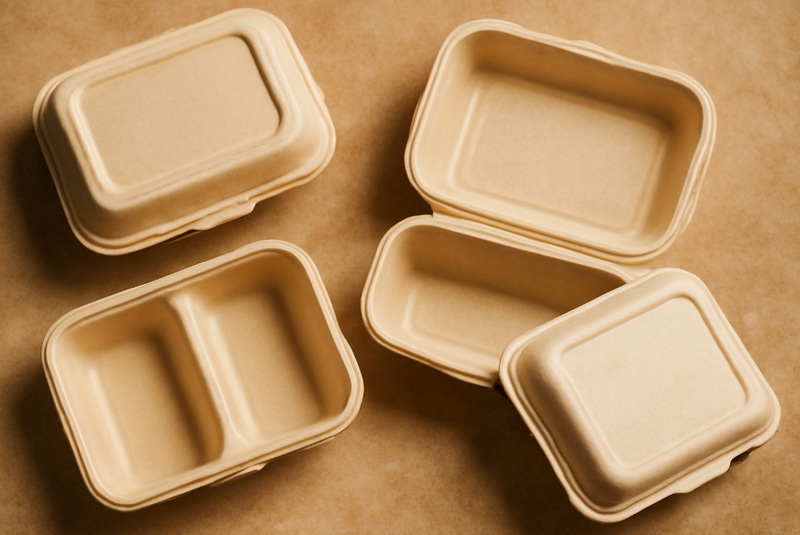
Content Menu
● What Are Disposable Takeaway Lunch Boxes?
● How Microwaves Interact with Different Materials
● Identifying Microwave-Safe Disposable Takeaway Lunch Boxes
>> Check for the Microwave-Safe Symbol
>> Know Your Materials
>> Inspect the Condition of the Box
● Risks of Microwaving the Wrong Disposable Takeaway Lunch Box
>> Chemical Leaching
>> Melting, Warping, and Fires
>> Food Safety Concerns
● Best Practices for Microwaving Disposable Takeaway Lunch Boxes
>> 1. Always Check for Microwave-Safe Labeling
>> 2. Remove Lids and Metal Components
>> 3. Use Lower Heat and Shorter Times
>> 4. Avoid Microwaving Fatty or Oily Foods in Plastic
>> 5. Do Not Reuse Single-Use Containers
● The Role of Manufacturers and Food Businesses
● Environmental Considerations
● Conclusion
● Frequently Asked Questions (FAQ)
>> 1. How do I know if my disposable takeaway lunch box is microwave-safe?
>> 2. Can I microwave food in a paper or cardboard takeaway lunch box?
>> 3. What happens if I microwave a foam (polystyrene) disposable takeaway lunch box?
>> 4. Are biodegradable or compostable takeaway lunch boxes safe in the microwave?
>> 5. Is it safe to reuse disposable takeaway lunch boxes for microwaving?
In today's fast-paced world, the disposable takeaway lunch box has become an everyday essential. Whether you are grabbing a quick meal at the office, enjoying a picnic, or ordering food delivery, these containers offer unmatched convenience. However, a question often arises: can you safely microwave disposable takeaway lunch boxes? This comprehensive guide explores the science, safety, and best practices for microwaving disposable takeaway lunch boxes, empowering you to make informed choices for your health and convenience.

What Are Disposable Takeaway Lunch Boxes?
Disposable takeaway lunch boxes are single-use containers designed to hold and transport food. They come in a variety of materials, including:
- Plastic (PP, PET, PS, PVC, etc.)
- Paperboard and cardboard
- Aluminum
- Biodegradable or fiber-based materials
- Foam (polystyrene or Styrofoam)
Each type of disposable takeaway lunch box has unique properties that affect how it reacts in the microwave.
How Microwaves Interact with Different Materials
Microwaves heat food by causing water molecules to vibrate, generating heat that cooks or warms the food. However, this process also affects the container holding the food. Some materials are stable and safe under microwave conditions, while others may melt, warp, or release harmful chemicals. Understanding these differences is crucial for safe reheating.
Identifying Microwave-Safe Disposable Takeaway Lunch Boxes
Check for the Microwave-Safe Symbol
The simplest way to determine if your disposable takeaway lunch box is microwave-safe is to look for a symbol on the bottom-usually a set of wavy lines or the words "microwave-safe." This indicates that the container has been tested to withstand microwave heat without melting or leaching dangerous chemicals.
Know Your Materials
- Polypropylene (PP, recycling code #5): Generally considered the safest plastic for microwaving. It resists high temperatures and is commonly used in modern disposable takeaway lunch boxes.
- CPET (Crystallized Polyethylene Terephthalate): Designed for high heat and often used in premium meal trays.
- PET/PETE (Polyethylene Terephthalate, #1): Not recommended for microwaving unless specifically labeled as safe.
- Polystyrene (PS, Styrofoam, #6): Not microwave-safe. It can melt, deform, and leach chemicals into food.
- PVC (#3): Should never be microwaved due to poor heat resistance and the risk of toxic chemical release.
- Paperboard/Cardboard: Can be microwaved if uncoated and labeled as safe. Avoid those with plastic or wax coatings unless specified.
- Aluminum: Never microwave aluminum containers or those with metal parts, as they can spark and cause fires.
Inspect the Condition of the Box
Even microwave-safe disposable takeaway lunch boxes can become unsafe if they are cracked, warped, or heavily stained. Damaged plastics may leach chemicals more readily when heated.
Risks of Microwaving the Wrong Disposable Takeaway Lunch Box
Chemical Leaching
Some plastics, especially those not designed for heat, can release harmful substances into your food when microwaved. These chemicals have been linked to health risks, including hormonal disruptions.
Melting, Warping, and Fires
Materials like polystyrene, non-microwave-safe plastics, and some coated papers can melt or deform, potentially contaminating your meal or even causing fires in extreme cases.
Food Safety Concerns
If a container soaks through, collapses, or fails to heat the food evenly, it can lead to undercooked meals or spills, increasing the risk of foodborne illness.

Best Practices for Microwaving Disposable Takeaway Lunch Boxes
1. Always Check for Microwave-Safe Labeling
Only use disposable takeaway lunch boxes clearly marked as microwave-safe. If in doubt, transfer your food to a glass or ceramic dish before heating.
2. Remove Lids and Metal Components
Many disposable takeaway lunch boxes have tight-fitting lids or metal handles. Remove these before microwaving to prevent pressure build-up, warping, or sparks.
3. Use Lower Heat and Shorter Times
Start with short intervals and moderate power settings to avoid overheating the container. Stir or rotate the food for even heating.
4. Avoid Microwaving Fatty or Oily Foods in Plastic
Fats and oils can reach higher temperatures and increase the risk of chemical leaching from plastics. Use glass or ceramic for such foods when possible.
5. Do Not Reuse Single-Use Containers
Disposable takeaway lunch boxes are designed for one-time use. Repeated microwaving can degrade the material, increasing the risk of chemical migration.
The Role of Manufacturers and Food Businesses
With growing awareness of food safety and environmental impact, many manufacturers now produce disposable takeaway lunch boxes from PP or CPET, which are safer and more recyclable. Food businesses are encouraged to clearly label microwave-safe containers and educate customers on proper usage.
Environmental Considerations
While PP and CPET containers are safer for microwaving, their environmental impact remains a concern. Recycling and proper disposal are essential. Some companies are exploring biodegradable options, but these should only be microwaved if explicitly labeled as safe, as some fiber-based containers can collapse or catch fire if too dry.
Conclusion
Microwaving disposable takeaway lunch boxes is certainly convenient, but not all containers are created equal. For safety, always check for microwave-safe labeling, use containers made from PP or CPET, and avoid microwaving foam, unmarked plastics, or coated paper products. Follow best practices to protect your health and ensure your food heats evenly. As the food industry evolves, look for clear instructions and eco-friendly options, and remember: when in doubt, transfer your meal to a microwave-safe dish.

Frequently Asked Questions (FAQ)
1. How do I know if my disposable takeaway lunch box is microwave-safe?
Check the bottom of the container for a microwave-safe symbol (wavy lines) or the recycling code #5 (PP). If neither is present, it's safer to transfer your food to a glass or ceramic dish before microwaving.
2. Can I microwave food in a paper or cardboard takeaway lunch box?
Yes, but only if the box is labeled as microwave-safe and has no metal parts or plastic/wax coatings. Remove any metal handles and avoid overheating to prevent collapse or fire.
3. What happens if I microwave a foam (polystyrene) disposable takeaway lunch box?
Foam containers can melt, deform, and release harmful chemicals into your food. They are not safe for microwave use and should be avoided.
4. Are biodegradable or compostable takeaway lunch boxes safe in the microwave?
Not always. Many fiber-based or biodegradable containers are not designed for microwave use and may soak through, collapse, or catch fire if too dry. Only microwave these if they are clearly labeled as safe.
5. Is it safe to reuse disposable takeaway lunch boxes for microwaving?
No. Disposable takeaway lunch boxes are intended for single use. Reusing them, especially in the microwave, increases the risk of chemical leaching and container failure.

















